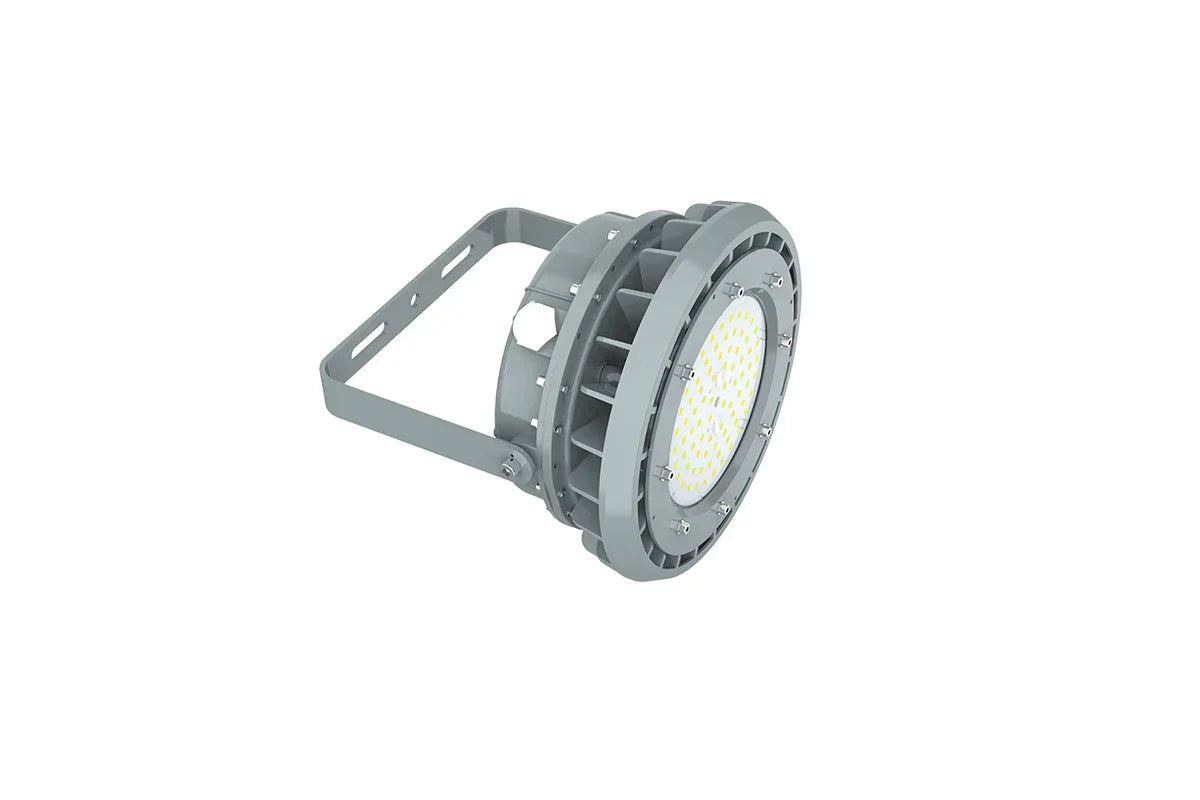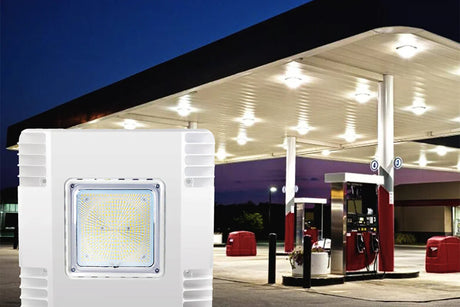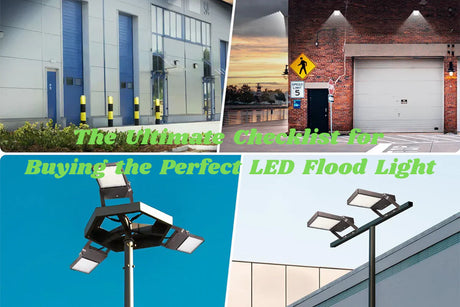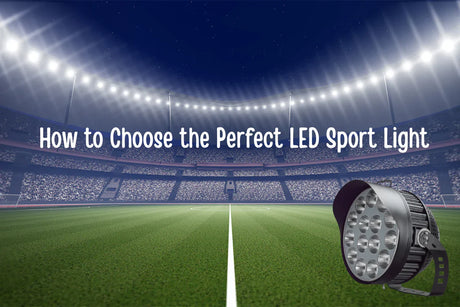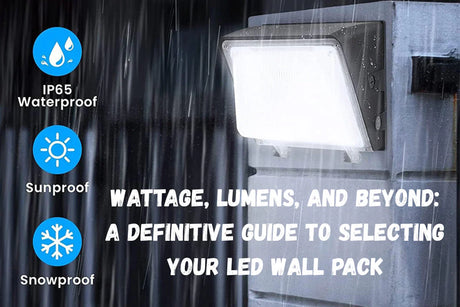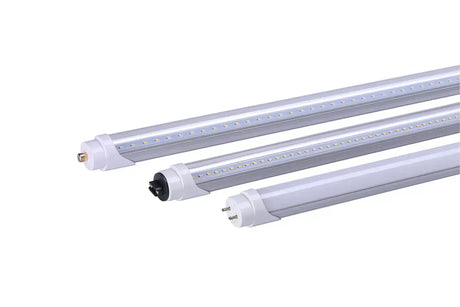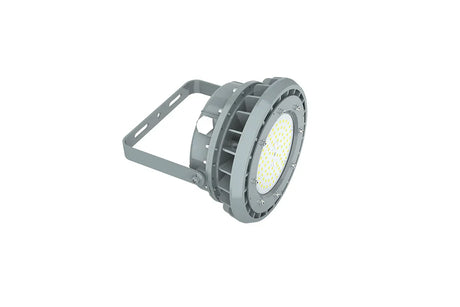In oil and gas, lighting isn’t just about visibility—it’s about safety and uptime. Flammable gases, vapors, and dust can turn a routine task into a high-risk scenario. That’s why choosing the right explosion-proof lighting is critical, from offshore rigs to refineries, tank farms, and gas plants.
LFD Lighting designs rugged, energy‑efficient LED luminaires for hazardous locations so you can maintain compliance, reduce maintenance, and keep operations moving.
What makes lighting “explosion-proof” in oil & gas
Explosion-proof (Ex) fixtures are engineered so that if an internal spark or ignition occurs, the enclosure contains the flame path—preventing surrounding gases or vapors from igniting. In practice, you’ll see two main code frameworks used at oil & gas sites:
- North America (NEC/CEC): Class I (gases/vapors), Division 1 or 2; Class II (dust), Division 1 or 2
- International (IEC/ATEX/IECEx): Zones (Zone 0/1/2 for gas, Zone 20/21/22 for dust), gas groups, and temperature classes (T-codes)
Selecting lighting that is tested and certified for your specific hazardous area classification (model dependent) is essential. LFD Lighting supports hazardous-location applications across Class I, Division 1/2 and Zone 1/2 requirements—speak with our team for the correct model and certification for your site.
Where explosion-proof lighting is used—rigs to refineries
- Offshore platforms and FPSOs: Decks, drilling floors, walkways, compressor skids, pump rooms, crane areas, helidecks periphery
- Onshore drilling sites: Masts, mud pumps, shaker houses, doghouses, power gen areas
- Refineries and petrochemical plants: Process units, loading racks, pipe racks, tank farms, blending and filling
- Gas processing and LNG: Dehydration units, compressor stations, metering skids, utility corridors
- Terminals and storage: Transfer points, manifolds, catwalks, perimeter and area lighting
Key features to look for
- Hazardous-location certifications (model dependent): Options for Class I, Division 1/2 or Zone 1/2. Ensure the marking aligns with your area classification, gas group, and T-code.
- Rugged construction: Heavy-duty housings and impact-resistant lenses to handle vibration, shock, and harsh environments common on rigs and in refineries.
- Corrosion resistance: Marine-grade finishes and stainless hardware options help combat salt spray and chemicals in offshore and coastal locations.
- Sealed against the elements: High ingress protection (e.g., IP66/67) helps keep water and dust out during washdowns, storms, and sand exposure.
- Thermal and ambient performance: Proper thermal design and T-code suitability help maintain safe surface temperatures in hot process areas or cold climates.
- Optical performance: Purpose-built optics for uniform coverage—linear for catwalks, flood for yards/tank farms, high/low bay for process halls—reduce glare and dark spots.
- Controls and emergency options: Photocells, occupancy sensors, or emergency battery backup (where applicable) support safety and energy goals.
- Low maintenance, high efficiency: Long-life LEDs and efficient drivers reduce relamping, lift rentals, and unplanned downtime.
Application quick guide
- Drilling floor and derrick: High-output floodlights with robust vibration resistance
- Walkways and stair towers: Linear fixtures with uniform distribution and glare control
- Compressor and pump skids: Compact, sealed fixtures with appropriate T-code
- Tank farms and loading racks: Wide-beam floods, corrosion-resistant finishes
- Offshore decks: Marine-grade construction, sealed to high IP ratings
How to specify explosion-proof lighting correctly
- Confirm area classification: Class I, Division 1 or 2—or Zone 1 or 2—based on your site’s hazardous area study and AHJ requirements.
- Check gas group and T-code: Ensure the fixture’s marking matches the gases present and the maximum permissible surface temperature.
- Match ambient temperature: Verify the fixture’s rated ambient range (e.g., hot process zones vs. cold climates).
- Select the right optics and lumen package: Use photometric layouts to hit target lux/footcandle levels and uniformity.
- Verify ingress protection and corrosion resistance: Especially critical offshore and in washdown or chemical exposure zones.
- Plan mounting and accessories: Pendant, ceiling, wall, pole, or stanchion; consider guards, visors, and wiring entries.
- Gather documentation: Datasheets, certifications, IES files, and installation guides for submittals and audits.
FAQs
Q: Explosion-proof vs intrinsically safe—what’s the difference?
A: Explosion-proof luminaires are built to contain any internal ignition so surrounding gases don’t ignite; intrinsically safe limits energy in the circuit so ignition cannot occur. Lighting fixtures in oil & gas hazardous areas are typically explosion-proof rather than intrinsically safe.
Q: Do I need Class I, Division 1 or Division 2?
A: Division 1 means flammable gases/vapors are present during normal operations; Division 2 means they’re present only abnormally. Your hazardous area classification determines which you need. LFD Lighting offers solutions for both (model dependent).
Q: Are these fixtures suitable for offshore environments?
A: Yes—when you select models with high ingress protection and corrosion-resistant construction. Confirm the finish, hardware, and certification match your offshore requirements.
Let’s light your site—safely
Ready to tighten compliance and reduce maintenance across rigs, platforms, and refineries? Talk to LFD Lighting about a tailored specification, photometric layout, and a fast quote.
Shop LFD Lighting explosion-proof lights: LFD Lighting Explosion Proof Light

